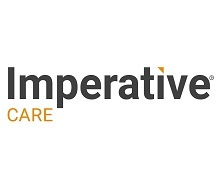 Imperative Care announced today that the US Food and Drug Administration (FDA) has finalised 510(k) clearance of its Zoom RDL radial access system—the company’s latest innovation in elevating stroke care and the “first radial access platform developed specifically for ischaemic stroke treatment”, as per a press release.
Imperative Care announced today that the US Food and Drug Administration (FDA) has finalised 510(k) clearance of its Zoom RDL radial access system—the company’s latest innovation in elevating stroke care and the “first radial access platform developed specifically for ischaemic stroke treatment”, as per a press release.
In addition to this new component of Imperative Care’s Zoom stroke solution, the company has also announced the successful completion of the first in-human case using Zoom RDL. The case in question was performed by neurosurgeon Justin Singer (Corewell Health, Grand Rapids, USA).
The Zoom RDL was used during treatment of an acute stroke for a patient with a complex anatomy that would have made femoral access challenging, the release adds. It provided 0.088-inch intracranial access from the radial artery, allowing the physician to remove the clot using a Zoom aspiration catheter and achieve complete revascularisation in less than 20 minutes.
“As we continue to advance how we care for our stroke patients and see the overwhelming benefit of performing radial interventions, it is remarkable to have a company like Imperative Care respond with much-needed tools for a radial approach,” said Singer. “I am impressed with the performance of the Zoom RDL in my initial experience and look forward to continuing a patient-first approach in my stroke practice. The addition of this new technology will allow me the first capability to choose the best access approach for each patient without limitations.”
The introduction of Zoom RDL provides neurointerventionists with a new option for achieving intracranial access to treat their stroke patients, enabling the best possible outcome based on an individual patient’s anatomy, according to the Imperative Care release. Zoom RDL features an extended hydrophilic coating and the longest optimised vessel dilator on the market—the company claims—providing a smooth introduction into the radial artery.
Similarly to the company’s FDA-cleared Zoom 88 large distal platform for femoral access, Zoom RDL features a large 0.088-inch lumen for compatibility with large-bore aspiration catheters. With an engineered support profile designed to reach the intracranial vasculature, physicians can get higher into the brain and closer to the stroke-causing clot, giving them more control over the mechanical thrombectomy procedure.
“We are excited to offer a new capability in our patient-first portfolio, empowering physicians with both femoral and radial access options to care for their patients for the best possible outcomes,” said Daniel Davis, president and COO of Imperative Care. “We are committed to providing meaningful solutions that directly address the feedback and needs of physicians through continued innovation of the Zoom stroke solution. A radial approach can be beneficial for patients with unfavourable femoral access and can make access site recovery easier for the patient.
“We are in a new era of stroke thrombectomy, and Zoom RDL is an important part of this evolution that will allow physicians to get closer to the treatment site for quicker, more efficient stroke procedures without compromising device selection.”










